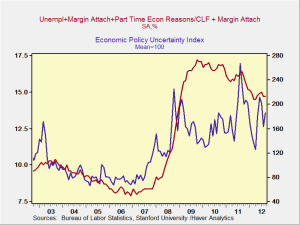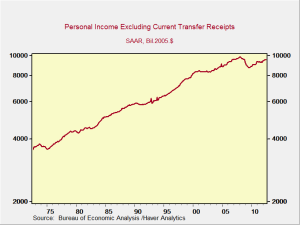On this metric, the U.S. is poised for success. The Wall Street Journal (WSJ), New York Times (NYT), and Financial Times (FT) all have stories on the International Energy Agency’s new World Energy Outlook 2012, which reports that the U.S. will be the largest producer of oil in the world by 2020 and a net oil exporter by around 2030. The story made the front page of both the WSJ, with “US Redraws World Oil Map,” and the FT, with “US to be world’s top energy producer,” but it only made it to page B6 in the NYT. Tells you something right there.
The headline story is great and underlines the point I have been making for a while that things are changing. The oil and gas industry is creating U.S. jobs directly, and it will do so indirectly as well by providing a lower cost base for manufacturers. In fact, last week the FT reported that German industrial companies are formally warning that they expect to lose jobs because of it.










